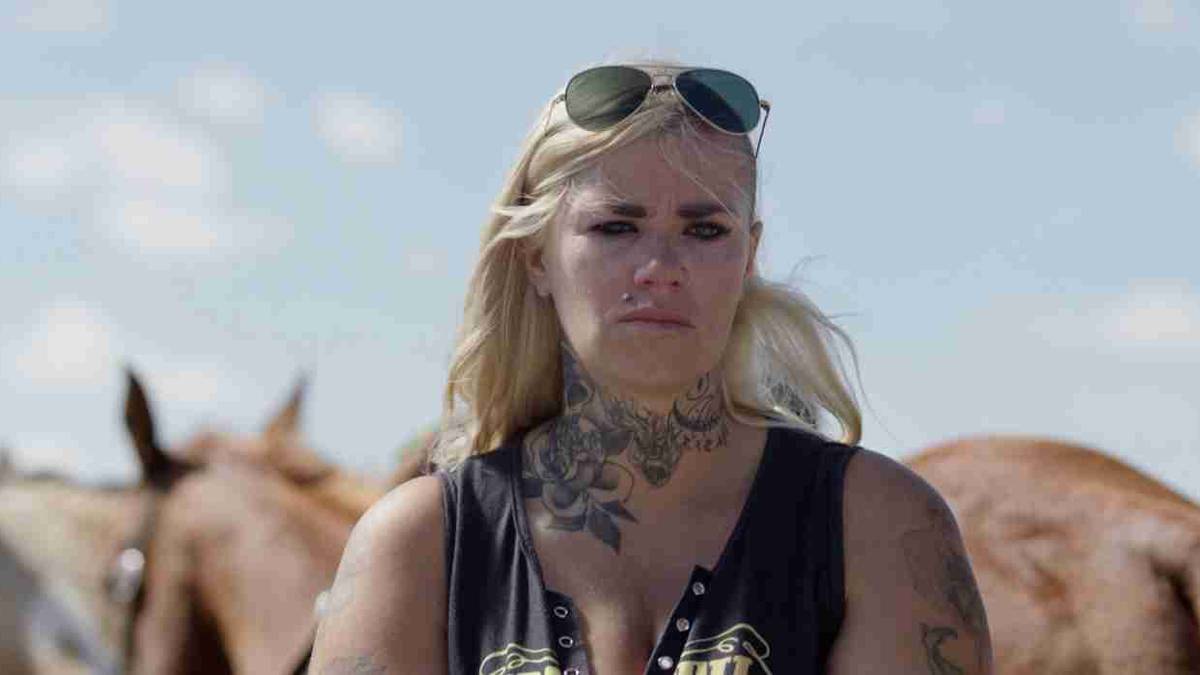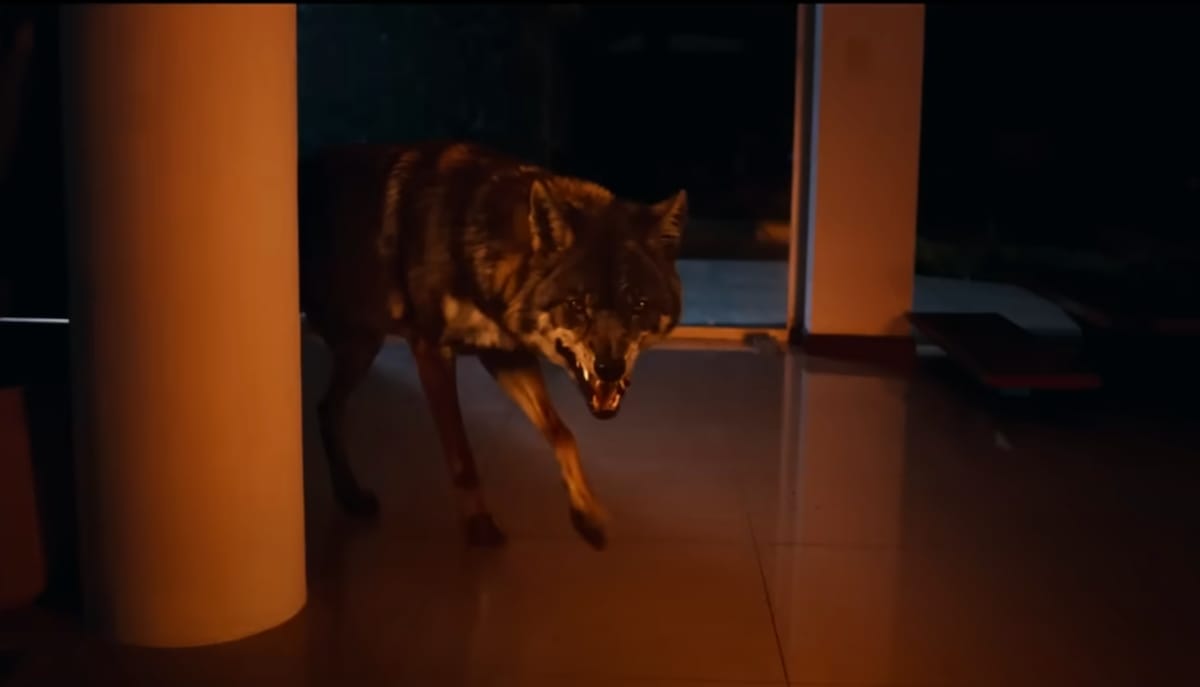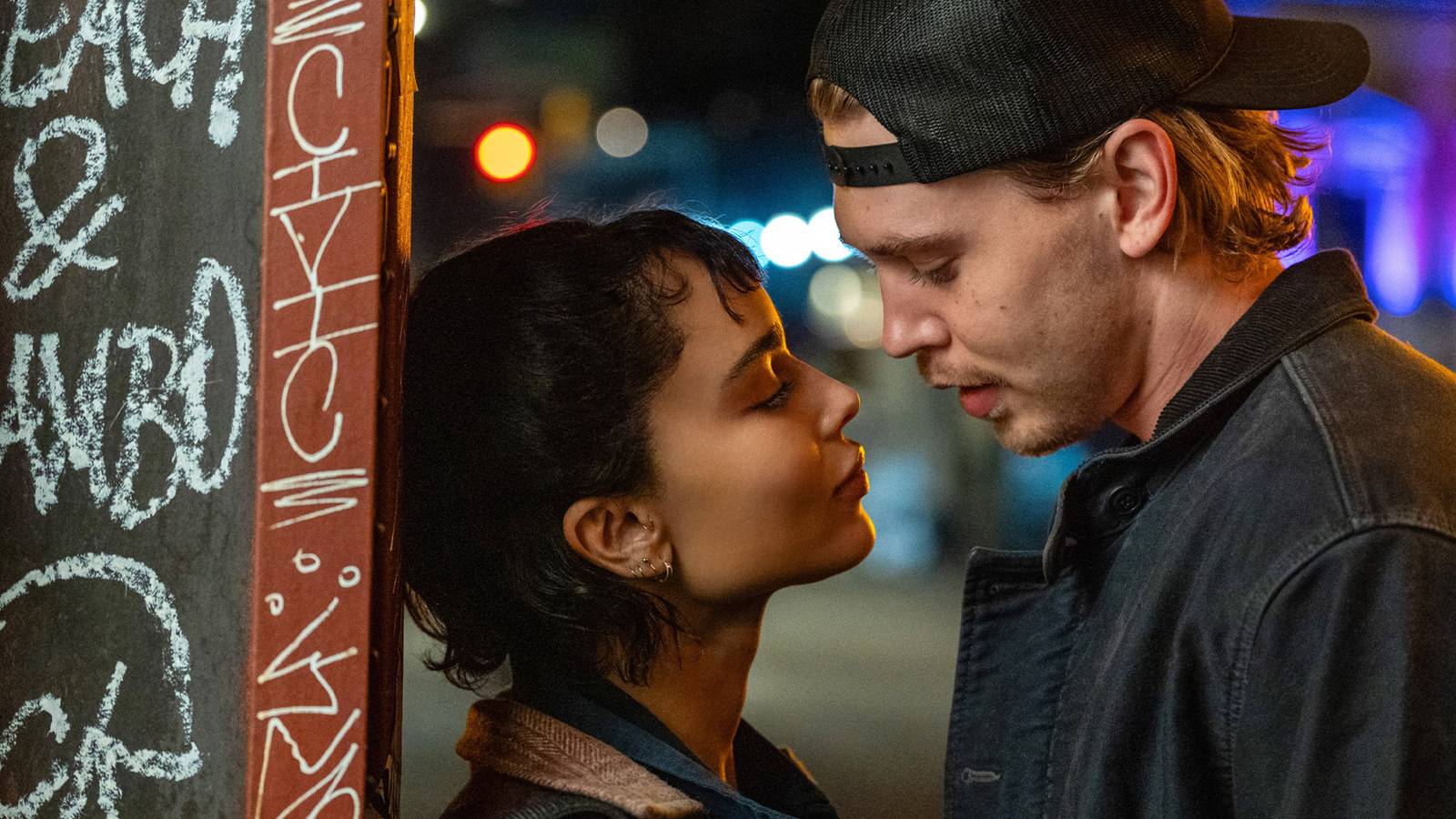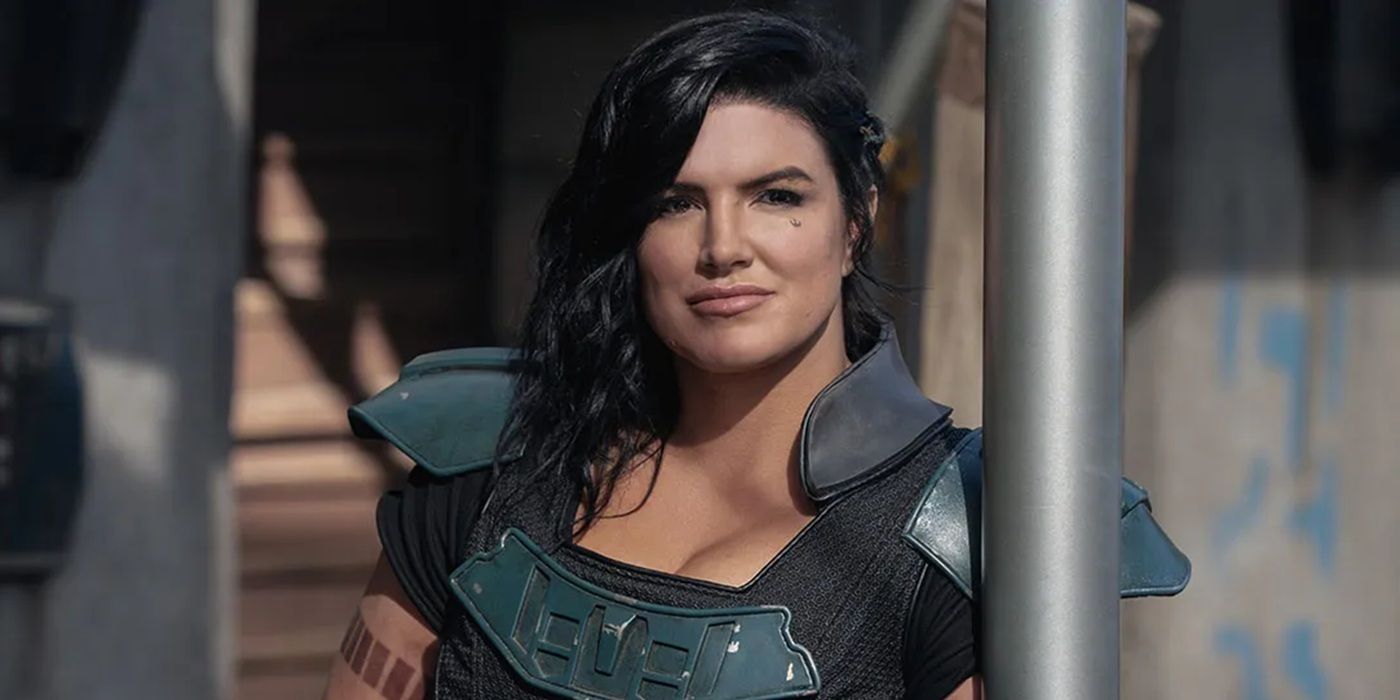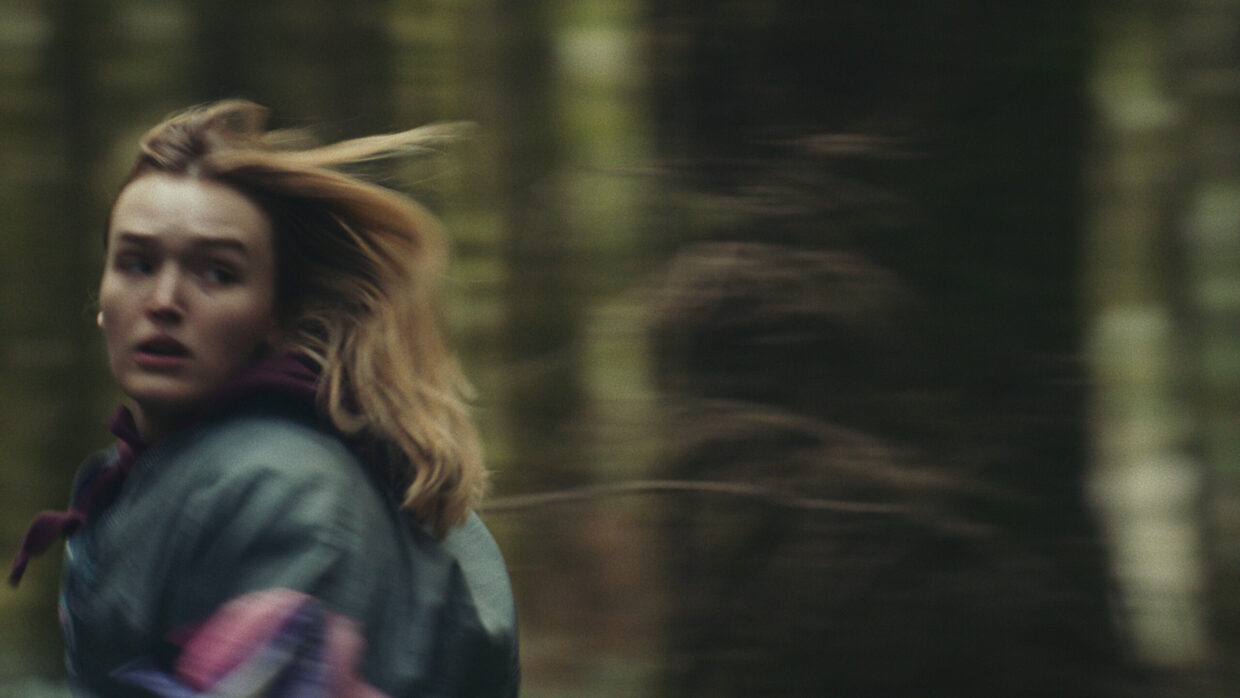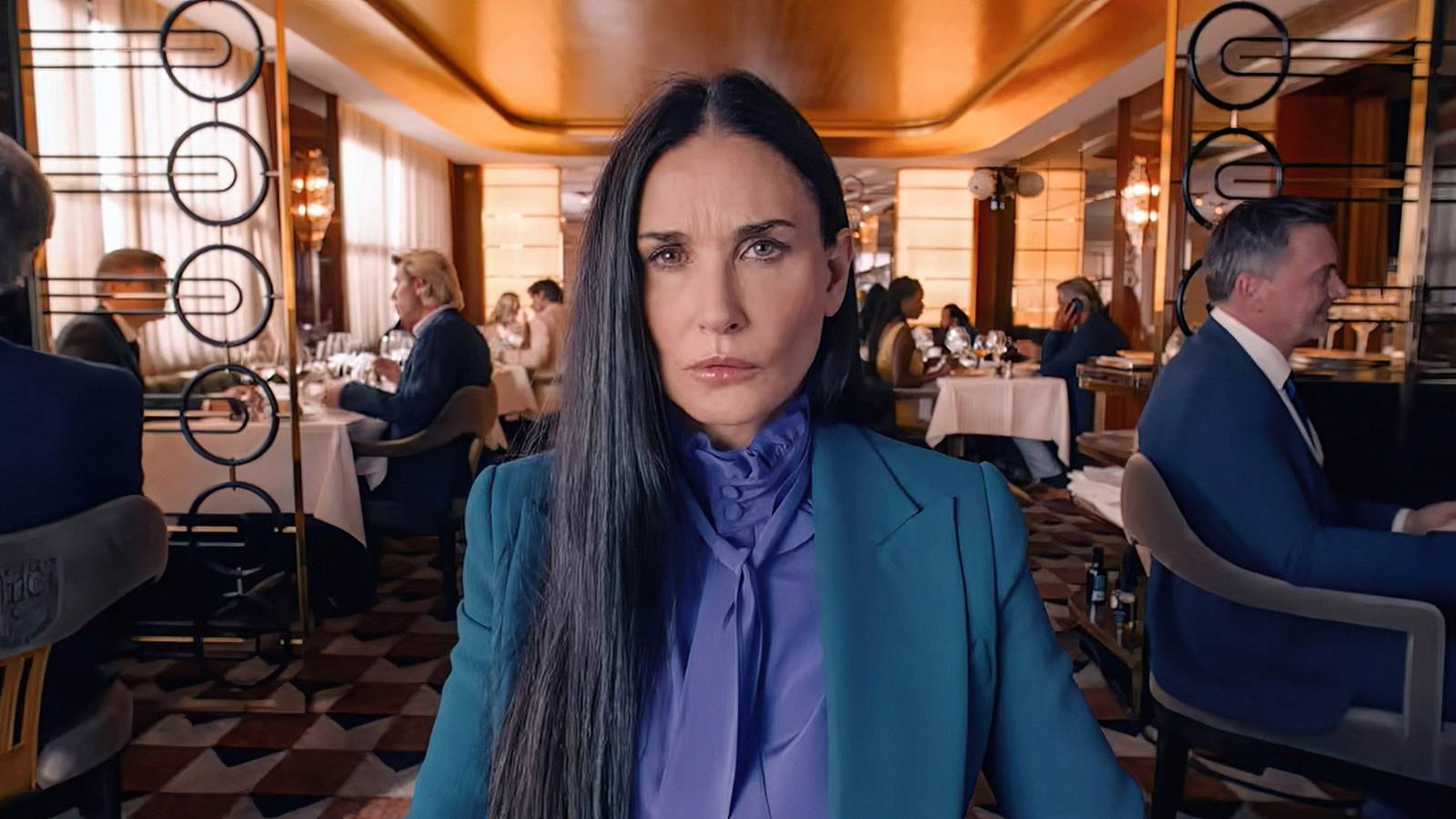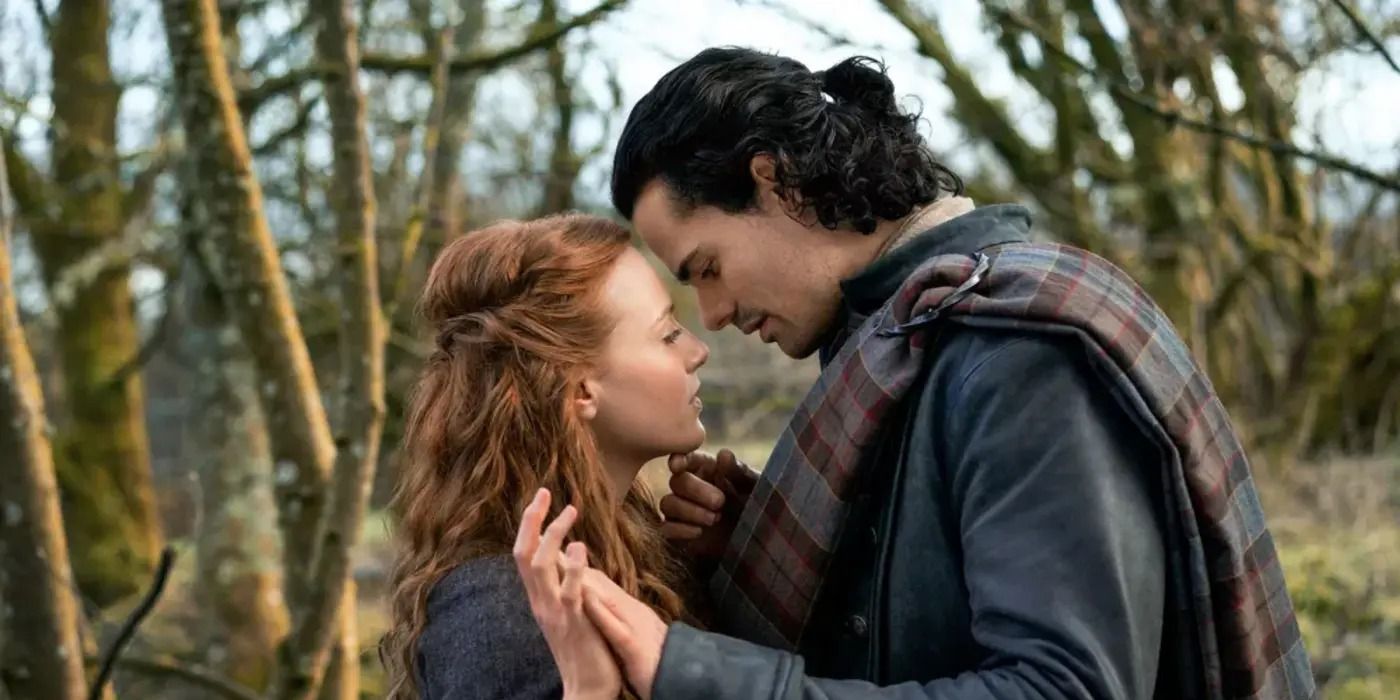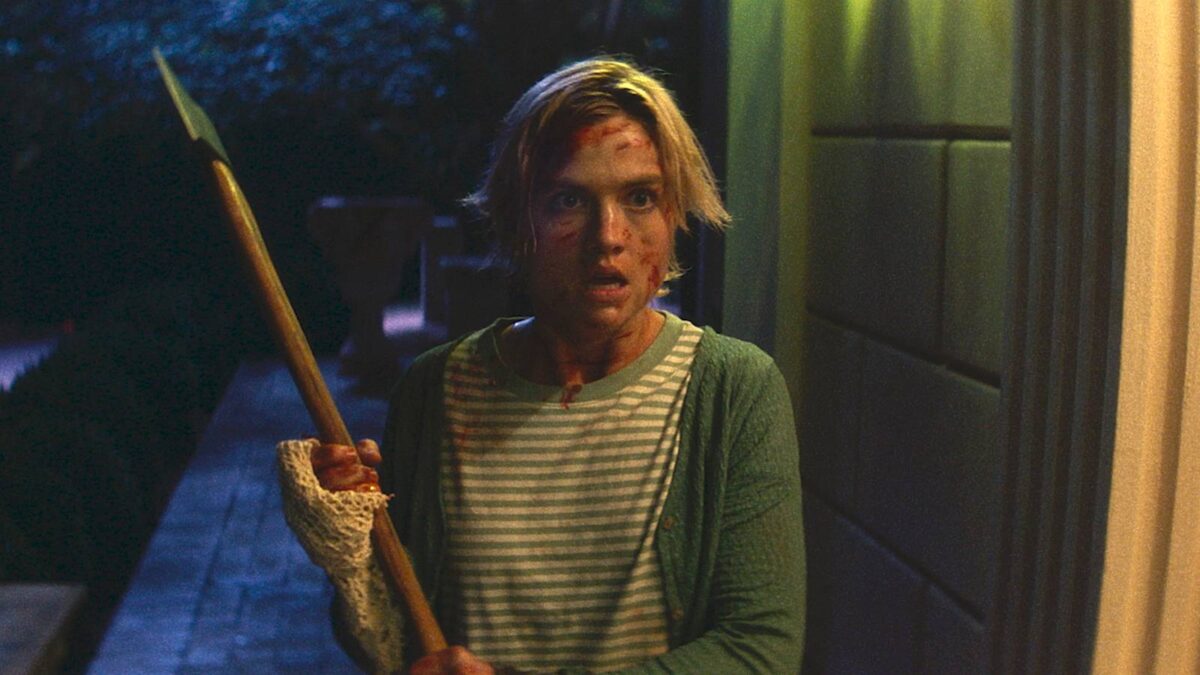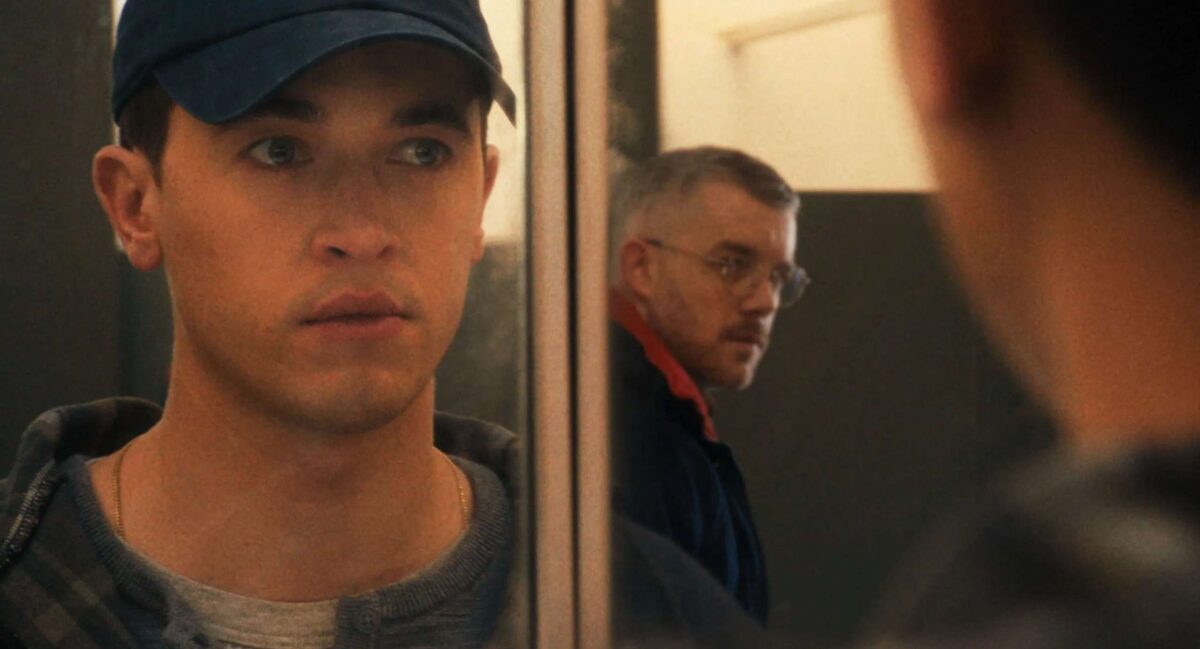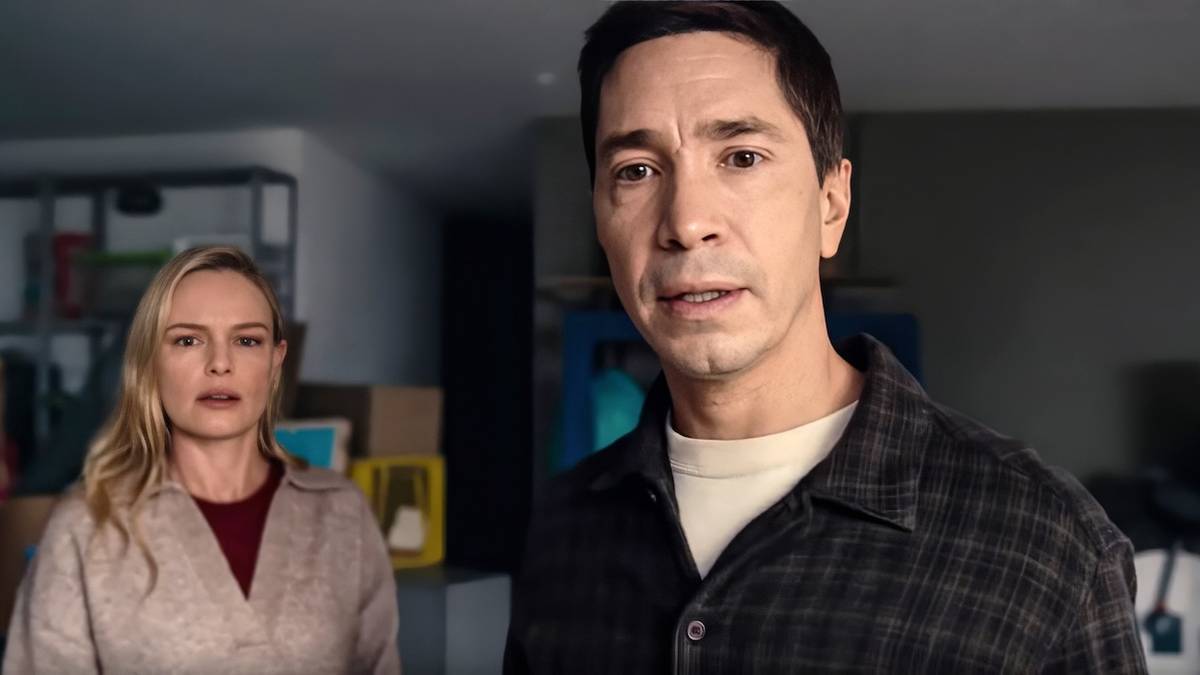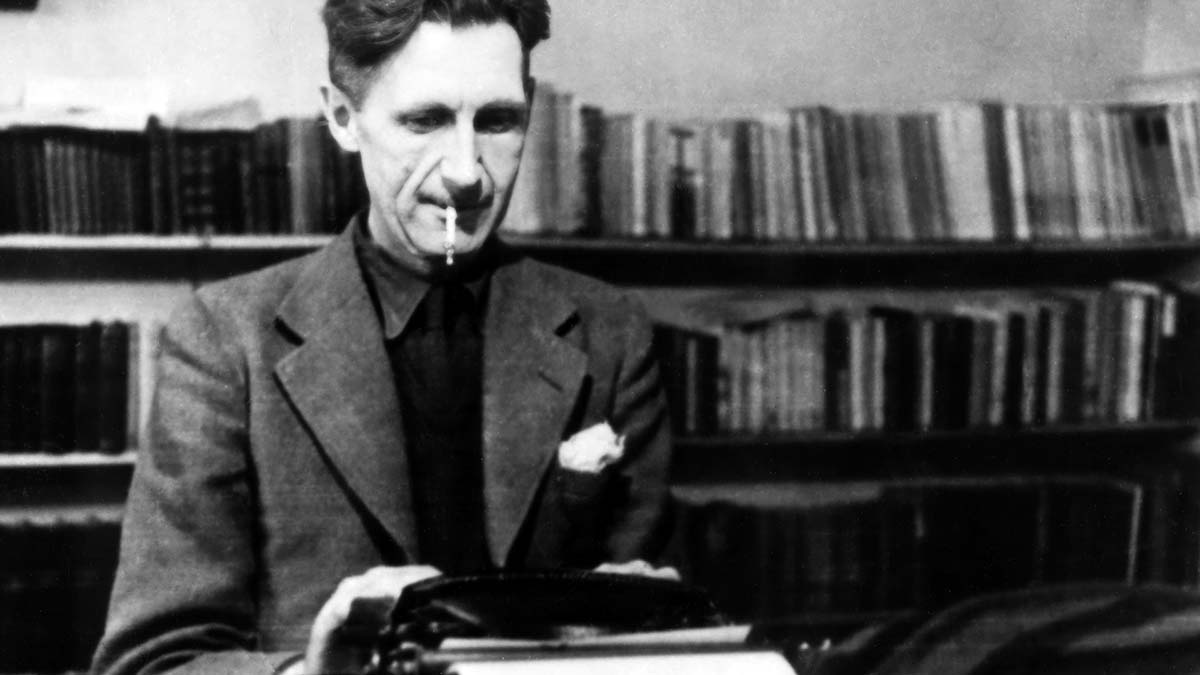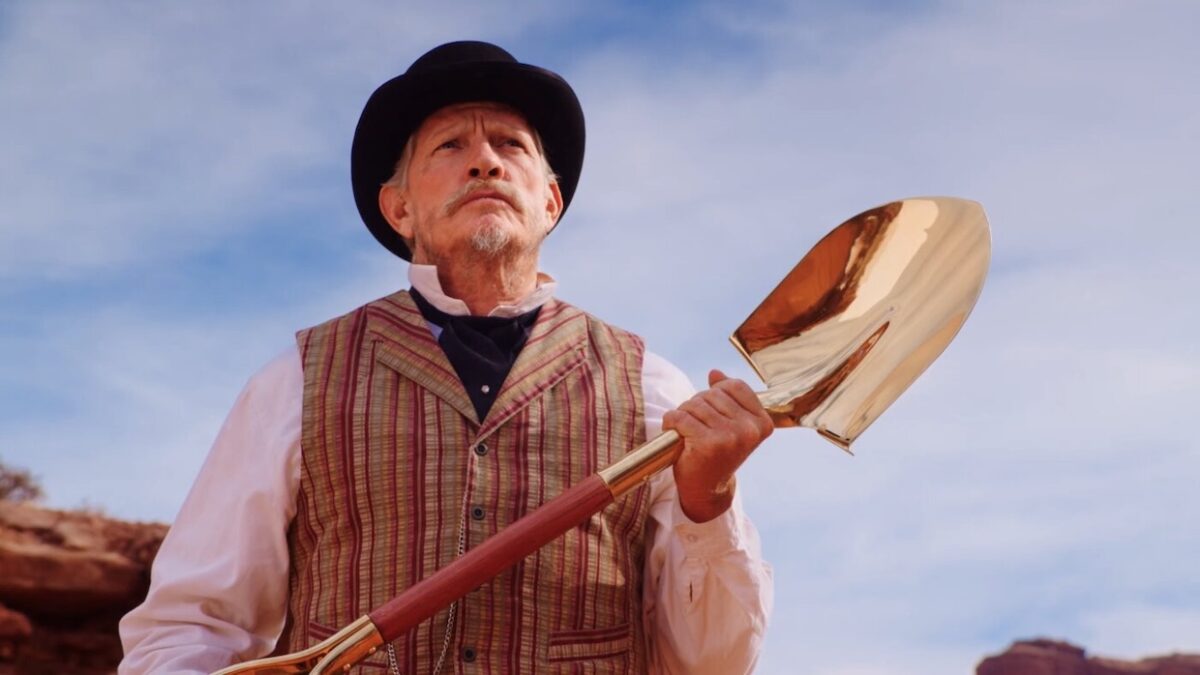
From Twin Peaks to Monument Valley: Duwayne Dunham on Legend of the Happy Worker
Aug 31, 2025
Legend of the Happy Worker
It’s well known that George Lucas approached David Lynch to direct Return of the Jedi (1983), and that Lynch (thankfully) demurred, instead pursuing Blue Velvet (1985). Less well-known is the fact that the two films share an editor—Duwayne Dunham, an unlikely hyperspace lane between two otherwise distant cinematic galaxies. As a director himself, Dunham has a body of work that poses yet another wrinkle in space-time: since making his feature debut with Homeward Bound: The Incredible Journey (1993), he has specialized in tales of misfit youngsters, predominantly for the Disney Channel.
The announcement that his new film, the long-gestating Legend of the Happy Worker, would premiere in this year’s Locarno Film Festival grabbed headlines on the basis of its being one of the last, if not the last, project to bear Lynch’s imprimatur, as an executive producer on the film. Based on a script gifted to him by Lynch after Blue Velvet, it also marks something of a full-circle moment in Dunham’s four decades-long collaboration with the late master—which also includes Twin Peaks (1990-1991), Wild at Heart (1991), and the gargantuan, galaxy-brained swan song that was Twin Peaks: The Return (2017).
Legend of the Happy Worker stakes its story in a ruddy patch of Monument Valley, where a community takes great pride in a daily ritual of digging, presided over by enigmatic but even-keeled foreman Champion Goose III (Thomas Haden Church). What are they digging for? The men themselves have never thought to question it—that is, until wide-eyed Joe (Josh Whitehouse) is prompted by another digger, grown existential with age. Discord mounts with the unexpected appearance of Joe’s uncle Clete (Colm Meaney), who blows into town full of tales of the world beyond and of machines that do the digging for you. Though set far from the misty pines of Twin Peaks, Happy Worker is also imbued with an air of all-American, lightly mystical absurdism—sometimes sunny, sometimes scary. This sense of kinship is heightened by the presence of Michael Horse, who played Twin Peaks’ deputy sheriff, not to mention the choruses of “Damn fine!” that greet the foreman’s regular inquiries into the diggers’ well-being, as well as the glinting golden shovel he wields—a dead ringer for those hawked by Dr. Jacoby in The Return.
In Locarno, I sat down with Dunham—an affable, handsomely-coiffed gentleman, as was Lynch—for a wide-ranging discussion about the provenance of his offbeat fable and its symbiotic relationship with Twin Peaks, connecting some of the dots in a singular career.
Filmmaker: As a director, you’ve made films for young people. I think Legend of the Happy Worker is the first film you’ve made “for adults”—and it feels like a family movie, but that upbeat quality gets kind of warped as the story progresses. Could you speak to where you see this film sitting in your body of work?
Dunham: Let me answer this way: When David Lynch first sent me the script for Blue Velvet, he called and said, “I’m doing this movie and I want you to cut it, but maybe you ought to meet me first.” So, we met, shared a couple of “Aw shucks” and “Gee whizzes” and figured we were kindred souls. Then I read it, and, you know, it’s a disturbing story. When I finally did talk to him, I said, “David, I don’t know. It’s not exactly my cup of tea. I’m more of a Disney kind of guy.” [Laughs] But ultimately, I choose the filmmakers that I work with based on who I can learn the most from—so I said, “Okay, David, I’m in,” and that turned out to be a wonderful association. And David gave me my first opportunity to direct on the first episode of Twin Peaks.
Filmmaker: Quite a debut!
Dunham: I often think about that. After we shot the pilot episode and everyone else had moved on, I was still with those characters every single day. When David said that we got picked up for seven episodes, it was almost a year, nine months or something, since the actors finished, but I was still finishing [editing] the pilot—I probably knew it better than even David and Mark Frost. That’s how I rationalized their choice to have me do the first episode, because I could get everybody back in character pretty quickly. Then I did two features back-to-back, Homeward Bound: The Incredible Journey and Little Giants (1994). So many of my friends said, “What are you doing? That’s G-rated, that’s professional suicide.” I said, “No, it’s not. That’s a great story.” Unfortunately, I could count on one hand the number of meals I had with my family in those three years. My kids were very young, and I made a decision at that time: I said, “If I’m lucky, I’ll work on movie stories that are age-appropriate to my kids, and as they grow and mature, if I want to, I’ll grow and mature too.” It worked out great for me.
Filmmaker: Maybe we could take a Homeward Bound detour. How did you come to that particular project? To go from working with actors to animals must have been quite a challenge.
Dunham: I had been given a script for a Disney project: it was five black R&B singers from Harlem in the ’60s. I gave my notes to a junior executive, and they liked them, and I went and went and went until I got to the guy that could actually greenlight. Through[out] this process, I kept saying, “I’m going on this family vacation and I’m gonna be gone for however many days,” so they kept pushing these meetings sooner and sooner. So, I’m in the office with the guy that can greenlight, and he asked me, “I like what you’re saying, but what makes you think you can tell this story?”—because I had only directed Twin Peaks. And I said, “Well, I’m a storyteller, I can tell this story—but I have a question for you: why would you want me to tell this story?” And he was shocked. He said, “What do you mean by that?” I said, “I’m a guy from Southern California. I grew up at the beach. This is a Black story about R&B. I can tell it, but it’s not the world I come from.” And he just dropped his pencil, and said, “What kind of story do you want to tell?” I thought that was a really interesting question. I said, “I want to tell the story of a young person who grows up on a farm, and walks to that fence at the outer perimeter of the property, and he looks out, looks back—and one day, he jumps the fence.” And the guy said, “Wait right here.” Now I’m thinking, “What an idiot. You just talked yourself out of a job.” But he came back and dropped a script in my lap, and it was The Incredible Journey. I read it and called back—I wasn’t going to not get this job, I really loved the story. And he said, “Now I want you to meet the producer.” I said, “Look, I’m on a plane in four hours. I gotta do this real fast.” I went and met the producer, Frank Levy, and Frank says, “We’re going to shoot this in Oregon, and we think we’re going to have our base camp at a place called Black Butte Ranch.” I said, “Black Butte Ranch? In about two hours, I’m on a plane to Black Butte Ranch. That’s where my family’s having this reunion!” [Laughter] Isn’t that wild?
Filmmaker: Oh, whoa—a wonderful sign that you’d found the right project! It’s funny because how you describe “the story you wanted to tell” could also almost apply to Happy Worker: the digger community is cut off from the world, and Joe hops the fence, in a way. But the origins of Happy Worker go back even further than Incredible Journey, to your first time working with Lynch.
Dunham: David gave me the script right after we did Blue Velvet. He said, “I read this thing and love it, but if I make it, I’ll just make it weird. With your sensibilities, you might turn it into something.” When somebody like David Lynch gives you the material, you figure it must be special: there’s a little sack of gold here. Through the years, we took meetings and tried to get it made, then it would sit for years at a time, then I’d go back to it. Then, not so long ago, my son was home with a bunch of his college friends, and they were in the kitchen one night, eating everything in sight, and they’re talking like you do when you’re in college: “This is how I see the world, and this is how I’m going to conquer the world.” And I was listening, and I thought, “My goodness, they’re talking about The Happy Worker.” So the next morning, I went the bookcase, got it out and thought, “Well, it’s time.” I think most stories have a time when they have the most impact. I never look at them as a particular type of story, I just look at what moves me emotionally: Is this a story I want to invest a big section of my life into? Because it’s an investment, you live with these things.
Filmmaker: The film is framed as “a fable for our time,” but you’ve had the script for 40 years, and that in turn was based on a play from the ’70s. So I’m curious, how much was there on the page? Did you update it at all?
Dunham: A little of both. I have been very fortunate to have worked with some very, very talented people, and one was Marcia Lucas. George Lucas had a rule: when I was going off to direct my first movie, I asked him, “Do you have any advice?” George said, “Always save one person whose opinion you trust to the very end.” I’m not sure I really knew what that meant, but when we did Raiders of the Lost Ark (1981), there was one person who came in at the very end [of post-production]. There were only four or five of us in that screening, but one person had not been there before, and that was Marcia. When it was over, George and Steven [Spielberg] and I were all jumping up and down, patting one another on the back: “This is fantastic, so much fun, it moves so well and so fast.” And then you hear: “Hey, fellas, I don’t want to rain on your parade, but I just have one thing.” Everybody went, “What could it be? This thing is perfect.” “What happened to the girl?” And everybody went, “Oh, shit.” We had left Marion tied to the stake when they opened the ark, never to be seen again. So Marcia was that one person—and on this movie, I was fortunate enough to bring her in to help edit some stuff and mold the story a little bit. She’s the one who came up with “A fable for our time.” She said, “You should put this up front, because your audience needs to know what kind of movie it is.” It’s not an easy movie to immediately understand, “What is this?” It’s a little different.
The original play was a one-act play, about 27 pages. They are in the script, intact, almost word for word. It’s mostly what Champion Goose says to Joe. And I believe it was the dialog that attracted the cast. Just about the only direction I really gave was, “Trust the words and play it straight. Don’t try to do too much with it”—because there’s a rhythm to the dialog that’s very unique. It was in the process of trying to find itself for so long, then Twin Peaks comes out and suddenly the coffee is “damn fine”! [Laughter]
Filmmaker: Ah, I assumed that refrain in Happy Worker was an homage to Twin Peaks—but actually, it’s the other way around!
Dunham: Oh, yeah. And when David did Twin Peaks: The Return, there’s Russ Tamblyn painting the gold shovels and “digging himself out of the shit.”
Filmmaker: So the connections with Peaks go both ways. I also wanted to ask about the temporality of this world you’ve created, because it’s hard to place. The opening suggests the Wild West, but there’s a car. And then we flash-forward to “105 years later—
Dunham: “—give or take.”
Filmmaker: Yes, “Give or take”—so, very specifically not specific. But everything still looks pretty much the same, only Joe’s family has a ’50s-era television. Could you speak to how you envision the story’s place in time?
Dunham: I always thought that this particular story was timeless, so I wanted an environment that seemed timeless. For me, that’s Monument Valley: it suggests the Old West, but it also suggests when time began—the great film Koyaanisqatsi (1982) was in large part shot there, as well as so many of the John Ford Westerns. And I chose to set it sort of as a Western, but there’s only one horse in the story. There’s no guns, just shovels and men and lives. And since they were digging, it was important for me that the dirt had to be red. People shoveling brown dirt all day was just too depressing.
One of the last things we added to the script was the scene with Clete when he does his version of what was a very popular song, “Eve of Destruction” by P. F. Sloan, written in 1965. But I didn’t want to do it as a song, I wanted the character to say the words—and they were so timely, maybe more timely today than in 1965. Lines like “The Eastern world, it is explodin’”; “even the Jordan river has bodies floatin’”; “Handful of senators don’t pass legislation”—it’s like he’s talking about our times today.
When that song came out, to me, to many people, it was an anti-war anthem. America was involved in Vietnam at the time. It was banned on many radio stations in the US, in many countries around the world, though it was a huge hit in France.
I met Phil [Sloan] for the first time a bunch of years ago, when I thought we were close to getting the financing. He was giving a talk in Berkeley, and afterwards, I introduced myself: “Phil, did you really write ‘Eve of Destruction’ as an anti-war anthem?” Phil said that when he was 17 years old, an angel visited him in the middle of the night, and said, “We’re going to write five songs. Get out five pieces of paper and a pencil.” And he and that angel wrote “Eve of Destruction,” “Secret Agent Man,” “The Sins of a Family” and two others I’m forgetting the titles of. I said, “Yes, but was it an anti-war anthem? He said, “No, it was a prayer for humanity.” That really stuck with me, and it found its way into the movie. It’s one of my favorite scenes.
Filmmaker: Clete and Goose seem to represent opposite poles—Clete is kind of the “darkness” to Goose’s “light”, but the binary is not nearly so clear-cut as “good and evil.”
Dunham: When I went to film school in San Francisco, I used to enjoy going to the arthouses, especially the Pacific Film Archive in Berkeley. And I’d find myself in a coffee house after a screening, and people would be talking, and you’d realize they were in that screening just down the street too, and then you’re talking to them—it’s the best! That’s what inspired me to make this movie. If it’s successful, it’s going to cause people to sit down in a coffee house afterwards and say, “What did you make of that?” It’s meant to be thought-provoking, and that’s why those lyrics from “Eve of Destruction” came into play. I thought, “Well, in my little world that’s so insulated, those characters have never been anywhere other than that hole; that’s all they know. Clete represents a world outside of this little capsule of time: what’s on the other side?” And what he says scares them to death—as it should!
Filmmaker: Maybe you can tell me a little about the casting—you were working with Johanna Ray, also Lynch’s casting director.
Dunham: Oddly enough, I found Joe first. I’ve known Johanna for years, and just trust her so much. She had a book of head shots, possible Joes, and she’s flipping through them, and this black-and-white photo went by. I said, “Stop, go back. That’s him.” And she says, “What? Don’t you want to him to read?” “Not really. That’s Joe.” Actually, Josh was, like, a Burberry model in London, and a rock and roller to boot. But he took some headshots with a friend, and they did something really goofy—it was the strangest looking photo. He’d sent it in as a joke. I think if I’d have seen the normal headshot, it wouldn’t have registered. But in that one, it was his eyes. To me, Joe was all about wide-eyed wonder, like a child. Everything’s new: not good, not bad, it just is.
Then I’ve always loved Thomas Church. I thought he was fantastic in Tombstone (1993)—it wasn’t a huge part, but when you have somebody playing a smaller role, and they’re so recognizable, like Kevin Costner was in Silverado (1985): Who is that guy on that Paint horse? Then Johanna brought up Colm, and I was like, “Wow.” I believe he had just come off a play, The Iceman Cometh. I had one conversation with him, as I did with Thomas: “Okay, let’s go.”
Filmmaker: I know that there’s quite a special story of how you and George Lucas were introduced to the work of David Lynch. Maybe we could close on that.
Dunham: So, my introduction was through Stanley Kubrick. I was with George in England at Elstree Street Studios shooting The Empire Strikes Back (1980). Stanley was on the lot, in post on The Shining, and one day, he called over to the cutting room and said, “Hey, have you guys ever seen this movie, Eraserhead?” I said, “We haven’t, but we’ve heard so much about it. We would love to see it.” Kubrick said, “It’s one of my favorite films. I’ve seen it 35 or 40 times. I’ll run it for you Friday night in the theater here on the lot.” “Fantastic!” So Friday night, it’s Stanley, George, and me: we sit down and we watch this movie—and it is the longest 90 minutes in the history of cinema. I’m sitting there thinking, “He’s testing us. He’s trying to see how much we can take.” [Laughing] But you could tell, as odd as the imagery and story was, this is a master visionary.
Still, when the screening was over, all I’m thinking is, “Please, nobody say anything about having a meal,” because I just want to go back to my hotel and take a shower. Sure enough, Stanley says, “Hey fellas, wanna go next door and have a meal? I’m like, “Please, George, please say no.” And George says, “Yeah, sure!” So, off we go—but it was fascinating to just be a fly on the wall. Really, they were talking more about technology than movies. 2001 is so different an interpretation of space than Star Wars, but both were interested in humanity and technology. It was around that same time that I first was exposed to the terminology “digital”: we were editing one day, and George stops the flatbed machine and he says, “Someday we’re going to have a digital trim bin.” I said, “A what?”
Filmmaker: But you would become a digital editing pioneer in your own right—you helped develop the EditDroid at Lucasfilm in the ’80s, and you insisted on using Avid to edit Little Giants when it was still a very new technology.
Dunham: But those guys [Lucas and Kubrick] saw things that the rest of couldn’t: that’s genius. One day, over 40 years ago, George stopped the machine again, he turned to me and says, “Someday we’re going to have a hat.” “What? What do we need a hat for?”“Because we’re sitting here reviewing all this footage and trying to formulate our thoughts; we might work on this one little two-minute scene for a week or two. But we’re gonna have a hat, and when we’re watching the film, when we think the idea, the hat’s gonna implement it for us.” Think of the process, from the thought in the mind to how it manifests in the physical world. With film, you have to stop, pull the film down, put it in the splice, cut it and tape it: the initial creative thought is interrupted by all this physical activity. We’re getting closer to that hat.
Publisher: Source link
Erotic Horror Is Long On Innuendo, Short On Climax As It Fails To Deliver On A Promising Premise
Picture this: you splurge on a stunning estate on AirBnB for a romantic weekend with your long-time partner, only for another couple to show up having done the same, on a different app. With the hosts not responding to messages…
Oct 8, 2025
Desire, Duty, and Deception Collide
Carmen Emmi’s Plainclothes is an evocative, bruising romantic thriller that takes place in the shadowy underbelly of 1990s New York, where personal identity collides with institutional control. More than just a story about police work, the film is a taut…
Oct 8, 2025
Real-Life Couple Justin Long and Kate Bosworth Have Tons of Fun in a Creature Feature That Plays It Too Safe
In 2022, Justin Long and Kate Bosworth teamed up for the horror comedy House of Darkness. A year later, the actors got married and are now parents, so it's fun to see them working together again for another outing in…
Oct 6, 2025
Raoul Peck’s Everything Bagel Documentary Puts Too Much In the Author’s Mouth [TIFF]
Everyone has their own George Orwell and tends to think everyone else gets him wrong. As such, making a sprawling quasi-biographical documentary like “Orwell: 2+2=5” is a brave effort bound to exasperate people across the political spectrum. Even so, Raoul…
Oct 6, 2025

